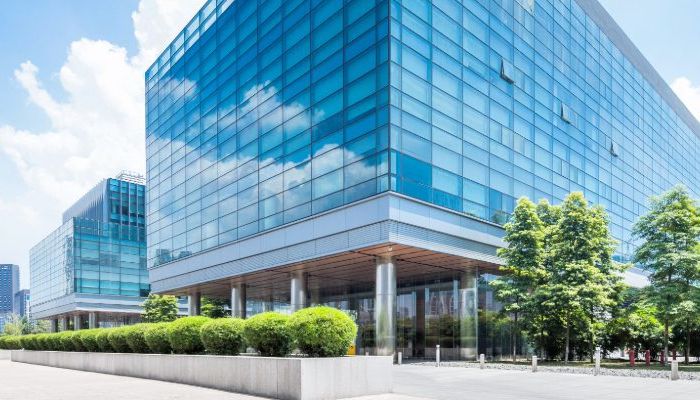In today’s workplace, employee well-being is not just a buzzword. Increasing productivity, encouraging engagement, and lowering turnover are important. Companies that prioritize the physical and emotional needs of their employees see better performance and greater loyalty.
One critical but often overlooked factor in achieving this is office space management. The design and management of an office play a huge role in the overall well-being of the employees who work there.
Using ergonomic furniture, natural lighting, and quiet areas can improve office space. This thoughtful management helps support employees’ physical health and mental well-being. In this blog post, we will look at how managing office space can improve employee well-being. We will also discuss how companies can design their workspaces to create a happier and healthier workforce.
The Importance of Employee Well-Being
Employee well-being isn’t just about perks like gym memberships or mental health days—although those are important. It’s about the daily experience of coming to work, the comfort of the environment, and the ease with which employees can complete their tasks. An uncomfortable, chaotic workspace can lead to stress, fatigue, and even physical pain, all of which lower productivity and morale.
When employees feel comfortable, supported, and inspired by their surroundings, their performance improves. According to research, happy employees are 13% more productive. A well-managed office space can contribute significantly to creating a positive workplace culture that enhances well-being.
In the video below, Brian Haines, FM:Systems CSO gives a tour of our new headquarters office with ergonic design, natural lighting and other space management strategies designed to enhance employee experience and well being.
Ergonomics: Designing for Comfort and Health
One of the most important aspects of office space management for well-being is ergonomic design. Ergonomics is about designing workspaces that fit the physical needs of employees, reducing discomfort, and preventing strain or injury. Poor ergonomics can lead to health problems. For example, sitting in a chair that can’t be adjusted or using a desk that is too low can cause muscle and joint pain. It can also lead to eye strain and headaches. These problems can harm employee health and reduce productivity.
1. Ergonomic Furniture
Providing employees with ergonomic furniture, such as adjustable chairs and desks, is essential for supporting physical health. Chairs that offer lumbar support, adjustable armrests, and height options help employees maintain good posture throughout the day. Similarly, sit-stand desks allow employees to alternate between sitting and standing, reducing the risks associated with prolonged sitting.
In companies like Google, Apple, and FM:Systems leaders take ergonomic design very seriously, and this focus shows in their employee satisfaction scores. By making these small but significant adjustments, companies can improve physical comfort and reduce health issues caused by poor workspace design.
2. Ergonomic Tools and Accessories
In addition to chairs and desks, ergonomic tools such as monitor stands, keyboard trays, and wrist rests can help employees maintain a healthier working posture. Providing dual monitors or laptops with docking stations can also reduce neck and eye strain. These small but effective tools show employees that their health and comfort are a priority.
The Power of Natural Lighting and Greenery
Lighting is another critical factor in office space management. Researchers have shown that natural lighting, in particular, has a powerful effect on both mood and productivity. Research shows that employees working in well-lit spaces with access to natural light tend to be more alert, focused, and content.
1. Benefits of Natural Light
Exposure to natural light helps regulate the body’s circadian rhythms, which control sleep-wake cycles. Lack of natural light can lead to fatigue, stress, and even depression. In contrast, offices that maximize natural light promote a more energetic and positive work environment. Large windows, skylights, and open-plan designs that allow light to flow freely throughout the office can make a huge difference.
Companies like Facebook have integrated this concept into their office designs, creating workspaces with ample sunlight and open areas to promote well-being. Employees are more energized, focused, and report feeling happier in these well-lit spaces.
2. Bringing the Outdoors In: Greenery and Biophilic Design
Beyond lighting, biophilic design, which incorporates natural elements like plants and greenery into the office, has become increasingly popular. Plants not only improve air quality but also reduce stress and make the environment feel more welcoming. Even simple touches like potted plants, green walls, or indoor gardens can have a positive impact on employee well-being.
Incorporating greenery into the office can also improve cognitive function and creativity. Studies have shown that employees who work in environments with plants report lower stress levels and increased job satisfaction.
Quiet Zones for Focused Work
In open-plan offices, noise and distractions can be a major issue, leading to stress and reduced productivity. This is why creating quiet zones or designated areas for focused work is crucial in office space management. These areas give employees the opportunity to escape from distractions and concentrate on tasks that require deep focus.
1. The Importance of Quiet Spaces
Noise pollution is one of the biggest complaints in open offices. While collaborative spaces are important for teamwork, employees also need quiet zones to complete focused work without interruptions. A well-managed office will strike a balance between open areas for collaboration and quiet zones where employees can work in peace.
For example, Microsoft’s offices incorporate quiet rooms that employees can reserve for tasks requiring concentration. This ensures that employees have access to spaces designed for focus and productivity.
2. Soundproofing and Acoustic Solutions
In addition to quiet zones, using soundproofing techniques and acoustic solutions can reduce noise levels across the office. This might include installing sound-absorbing panels, using carpets to dampen noise, or even providing noise-canceling headphones. By reducing noise distractions, companies can help employees feel less overwhelmed and more in control of their work environment.
Involving Employees in Space Planning
Another key element of office space management that enhances well-being is involving employees in the planning process. Employees understand their work styles and needs best, so allowing them to voice their opinions on office organization can lead to better outcomes. Whether through surveys, focus groups, or simply asking for feedback, involving employees ensures that the office layout aligns with their preferences.
1. Boosting Satisfaction through Participation
When employees are consulted about their workspaces, they feel valued and heard. This can lead to higher satisfaction, reduced stress, and even lower turnover rates. When you allow employees to have a say in where to locate quiet zones or which types of furniture work best for them, you foster a sense of ownership and commitment to the office environment.
2. Flexibility and Personalization
Additionally, providing flexible workspaces that employees can personalize to their preferences can further enhance well-being. This might include adjustable desks, mobile furniture, or even different lighting options that employees can control. Personalization allows employees to create an environment where they feel comfortable and productive.
Reducing Turnover Through Thoughtful Space Management
An investment in thoughtful office space management has long-term benefits for employee retention. When employees feel that a comfortable and engaging workspace supports their well-being, they are more likely to stay with the company. On the flip side, cramped, poorly designed offices can lead to dissatisfaction, burnout, and ultimately higher turnover rates.
1. Long-Term Employee Retention
Studies have shown that companies that prioritize employee well-being through office design experience higher retention rates. Comfortable, ergonomic spaces combined with access to natural light, greenery, and quiet zones create an environment where employees are happy to work long-term.
2. Reducing Burnout
Poor office space management can contribute to employee burnout. Overcrowded workspaces, constant distractions, and a lack of privacy can lead to mental and physical exhaustion. By addressing these issues through thoughtful space management, companies can reduce the risk of burnout and keep their employees healthy and engaged.
Conclusion
Office space management plays a crucial role in enhancing employee well-being. From ergonomic furniture to natural lighting and quiet zones, the design of an office directly impacts how employees feel and perform. By considering the physical and emotional needs of employees, companies can create workspaces that foster well-being, boost productivity, and reduce turnover.
Ultimately, investing in thoughtful office space management isn’t just about creating a visually appealing office—it’s about creating a supportive environment that prioritizes the health, happiness, and long-term success of employees.
FAQs
1. How does ergonomic furniture impact employee well-being?
Ergonomic furniture reduces strain, improves posture, and prevents injuries, leading to better physical health and increased productivity.
2. Why is natural light important in an office environment?
Natural light helps regulate circadian rhythms, boosts mood, and increases energy levels, making employees more alert and focused.
3. What are quiet zones and why are they important?
Designated areas for focused work, quiet zones provide a space free from distractions. They are crucial for tasks requiring concentration and help reduce stress.
4. How can greenery enhance employee well-being?
Greenery improves air quality, reduces stress, and creates a more calming environment, which can enhance employee satisfaction and creativity.
5. Why should employees be involved in office space planning?
Involving employees in space planning ensures that the office meets their needs and preferences, boosting satisfaction and reducing turnover.










